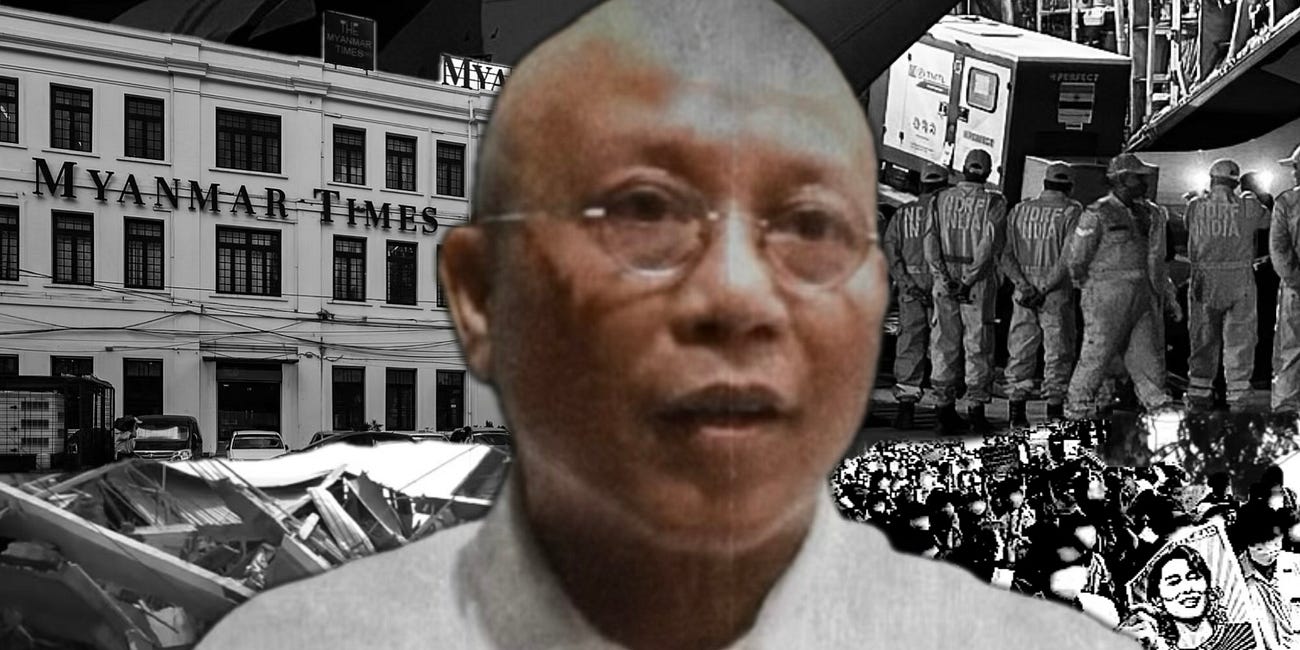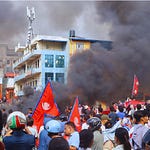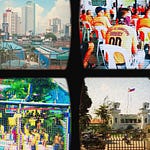There had been growing speculation that the military was planning to take control, but very few people thought they would actually go through with it.
“What’s the reasoning?” asks Sonny Swe, a Burmese publisher and former political prisoner, who had been among the doubters. “On January 31st, [I] had a dinner [with friends], and we are hearing that there could be a coup. Yes or no? Believe me, I am on the ‘no’ side. I didn’t think the coup was necessary. I mean, who wants to ruin the country?”
But on the morning of February 1, 2021, armoured personnel carriers rolled towards parliament. Within a few hours, the Sit-Tat (the Myanmar military, sometimes also referred to as the Tatmadaw) had removed the civilian government and established control over the country.
Four years on, the coup has spiralled into a brutal civil war. The State Administration Council (SAC), the official name of the military junta, is fighting armed groups on multiple fronts and unleashing violence on civilians; tens of thousands of people have been killed or detained, and more than 3 million have been displaced.
Hopes dashed
The coup — and everything that has followed since — is especially frustrating and tragic considering how much hope there’d been for the country and its political future.
After more than two decades of military rule, in 2011 the country embarked on a series of political reforms that moved it towards democracy. The previous year, Aung San Suu Kyi, the internationally revered political prisoner and Nobel Peace Prize winner, was released from 21 years of incarceration (15 of which had been spent under house arrest). She returned to frontline politics, leading the National League for Democracy (NLD) to a landslide victory in the 2015 elections, establishing the role of State Counsellor of Myanmar (which was created because she was ineligible for the presidency) and becoming the country’s de facto head of government.
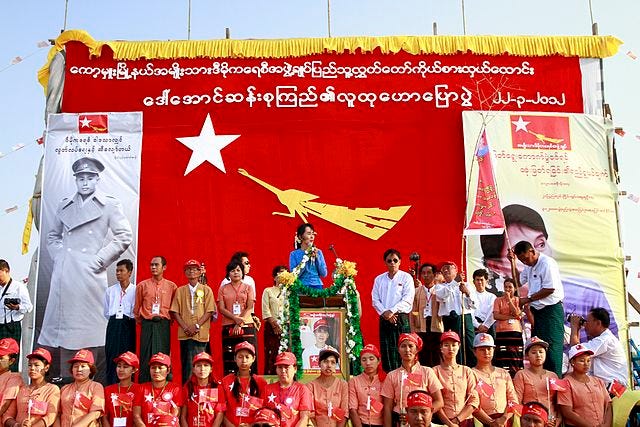
“Everything [was] moving forward, progressing; everyone tasted democracy, so-called Myanmar democracy,” Sonny tells Currents. “All the young generation benefited from that. Everybody understands ‘Oh, this is democracy’ — press freedom, freedom of speech, stuff like that. So everything is trending, going in the right direction.”
Things were far from perfect, however. Secessionist armed groups continued to operate throughout the country, and there were cases of journalists allegedly being kidnapped, tortured and murdered. Though officially no longer in power, the Sit-Tat exerted considerable sway in Myanmar. This was demonstrated in particularly brutal fashion when the Sit-Tat were largely left unchallenged while perpetuating a genocide against the Rohingya Muslim minority in the west of the country.
Even after the political reforms, the Rohingya people were continually slaughtered and driven out of Myanmar. Internationally, the NLD came under increasing criticism for its ambivalent attitude towards persecution of the Rohingya. Racist and xenophobic rhetoric thrived — especially on social media platforms like Facebook — and the Rohingya refugee population in Cox’s Bazaar in neighbouring Bangladesh exceeded 860,000 by mid-2020. In the midst of this humanitarian crisis, Aung San Suu Kyi once referred to some of the generals accused of genocide as “rather sweet”.
"The persecution of the Rohingya […] was abetted by Aung San Suu Kyi and the NLD in a bid to win over the military to their side,” says Ja Ian Chong, Assistant Professor of Political Science at the National University of Singapore.
“It did not work, obviously,” he adds.
Understanding the coup
The official reason for the coup was that military intervention was necessary because of election interference and voter fraud, allegedly carried out by the NLD to secure the party’s win the 2020 general elections. In his first address to the nation a week after taking control, Min Aung Hlaing, the general who orchestrated the military takeover, doubled down on these claims while promising the eventual return to democratic rule.

“In accordance with the constitution when we have our democracy, no one is above the law,” the junta leader said. “When we have completed the emergency law, we […] will have a multi-party election, and will hand over power to the party that wins the election according to the rules of democracy.”
With no credible evidence to support the claims the voter fraud narrative has been widely discredited, and any future elections held under the junta are expected to be a sham. With no persuasive explanation for the coup, alternative theories on why the military took control continue to abound. “Basically, the military did not want to accept a future where they did not have power”, says Chong.
There has also been speculation that Min Aung Hlaing was largely concerned about his own position: that he might’ve been facing investigation for financial irregularities; that if he was forced to accept retirement from the military he could be susceptible to prosecution for war crimes; or simply that he was bitter about getting passed over for the (mostly ceremonial) role of president.
“It’s so stupid,” Sonny elaborates. “And especially Min Aung Hlaing, [he] has no competence. He’s holding the 1988 manual; things were so different then, people [now] are a lot smarter.”
Almost immediately after news of the coup broke, large swathes of the population took to the streets in protest. The military quickly fell back on old, violent habits. Live rounds were fired at civilian protestors, including small children. By April 2021 it was estimated at least 700 people had been killed in junta-led clampdowns, while many more were detained.
A country in despair
Over four years on, Myanmar is splintered by a civil war raging across the country. Numerous armed groups are battling the military, and human rights abuses and war crimes have become commonplace — the number of deaths is now estimated at around 80,000, with over 25,000 people being detained and millions cut off from humanitarian aid. Senior NLD figures and other politicians who fled Myanmar have since formed the National Unity Government (NUG), a government in exile; Aung San Suu Kyi, who was deposed and arrested during the coup, remains in prison, with numerous reports stating her physical condition has been steadily deteriorating without access to proper healthcare.
Though the junta still maintains a grip over the more populated areas in Myanmar — including Yangon and Mandalay, the two largest cities, and government hub, Naypyidaw — it’s estimated that it currently controls less than half the country. Over the years, with resources and troop numbers being stretched to breaking point, the Sit-Tat has become increasingly reliant on airstrikes on areas held by armed groups, with no consideration for civilians caught in the crossfire.
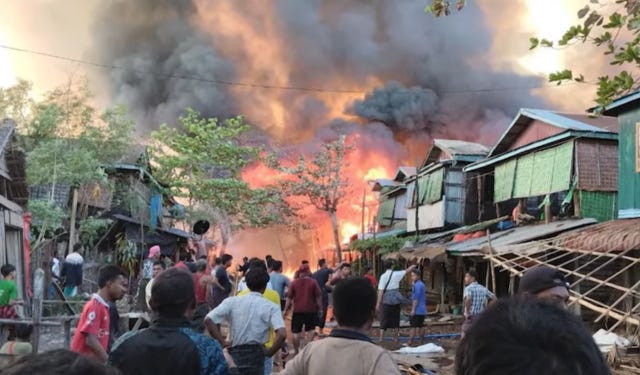
“Instability in Myanmar is resulting in a humanitarian crisis on the ground,” says Chong. “A power vacuum can make the country an arena for criminality or even major power competition. There are reports of the PRC (the People’s Republic of China) supporting some actors to protect their equities in Myanmar. Some of this criminality is seen in the scam centres that have relocated to areas of Myanmar where there is little possibility of oversight. These scam centres are involved in human trafficking as well.
“There is also the risk of refugee outflows,” Chong adds. “There are already significant numbers of internally displaced persons reported.”
The suffering and devastation seen throughout Myanmar was made worse in March 2025, after a 7.7 to 7.9 magnitude earthquake tore through the centre of the country, causing the deaths or displacement of countless thousands of people. “With the earthquake there have been aid organisations and other governments that have to work with the junta to get assistance on the ground,” says Chong. “Reports are mixed. Some say that the junta is trying to prevent aid getting to areas under the control of their rivals, including the NUG/PDF (People’s Defence Force) and other EAOs (ethnic armed organisations).”
Many international organisations and governments have been quick to denounce the actions of the military. But while some sanctions, such as an arms embargo, have been placed on Myanmar, reactions have been mostly limited to condemnations or calls for peace.
Despite the global outrage, the junta hasn’t been entirely internationally isolated; it’s believed that some countries — most prominently Russia and China — continue to do business with the regime, with Russia supposedly seeking arms deals to bolster it’s war in Ukraine, and China looking to protect its infrastructural investments in Myanmar. “Part of the reason for Beijing's interest is to secure border areas and to maintain control over the Kyaukphyu port and the oil and gas pipeline they have invested in,” says Chong.

The 2025 ASEAN summit
Closer to home, the reaction from ASEAN (the Association of Southeast Asian Nations) — a regional collective of countries brought together with the goal of building economic and security cooperation — has been tepid at best.
In 2021, just months after the coup, ASEAN came up with a Five-Point Consensus aimed at achieving “a peaceful solution in the interests of the people”. This 5PC calls for, among other things, an end to the violence, the delivery of humanitarian aid, and dialogue among all parties. At the time, Min Aung Hlaing himself agreed to this consensus. But it’s been years, and Myanmar has mostly ignored the non-binding 5PC, with little consequence from ASEAN. This has fed into long-standing criticism of the bloc’s ineffectiveness in the face of anti-democratic and even violence action perpetrated by its member states.
With the ASEAN summit due to take place in Malaysia this coming week — of which representatives of Myanmar will be in attendance — speculation is that very little will be achieved in progressing towards peace in the war-torn nation.
“Myanmar has its five-point consensus programme and its envoy,” says Chong. “However, it does not appear that ASEAN is very effective or trying hard enough to address the civil war in Myanmar. There will likely be lip service at the upcoming summit, but I would be surprised if there is substantive and sustained progress.”
Voices from exile
This episode of the Currents podcast continues with my interview with Sonny Swe, discussing the fallout from the coup and the ensuing civil war.
“This coup affected… everyone,” he says. “It doesn’t matter how old you are, how young you are; doesn’t matter the age. Doesn’t whether you’re male or female. Whether you have yellow skin, or white skin, or brown skin, or black skin. It doesn’t matter which religion you follow; whether you’re rich or poor… This coup impacted every layer, everyone the same way.”
One of the thousands of people who fled Myanmar following the coup, Sonny now lives in exile in northern Thailand; he remains separated from his family, and unsure when he will be able to return to his home country.
Part one delved into Sonny’s background as a political detainee and the catastrophic 2025 earthquake. In this concluding episode, he talks about the 2021 coup, the ongoing devastation caused by the civil war, living in exile and where he thinks the future for his home country might lead.
You can listen to the first part of Sonny’s interview here:
Surviving Solitary Confinement, Life in Exile, and the Future of Myanmar: An Interview with Sonny Swe (Part 1)
After talking for several minutes about his nine-month confinement in the ‘special section’ of Myanmar’s infamous Insein prison, Sonny Swe takes a second to reflect.






